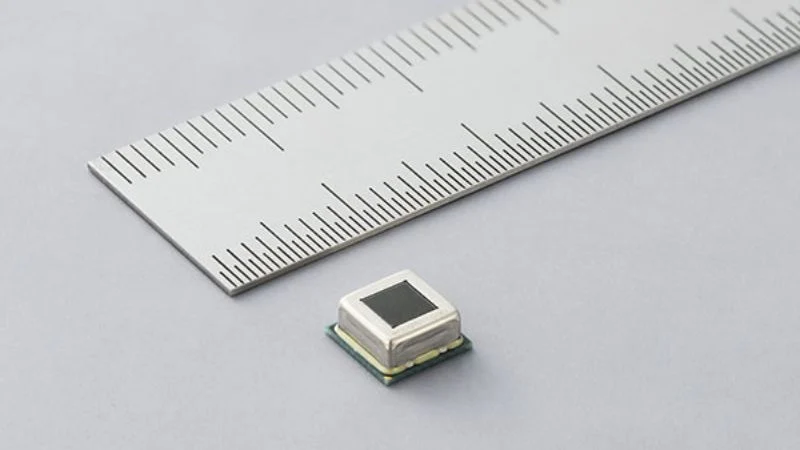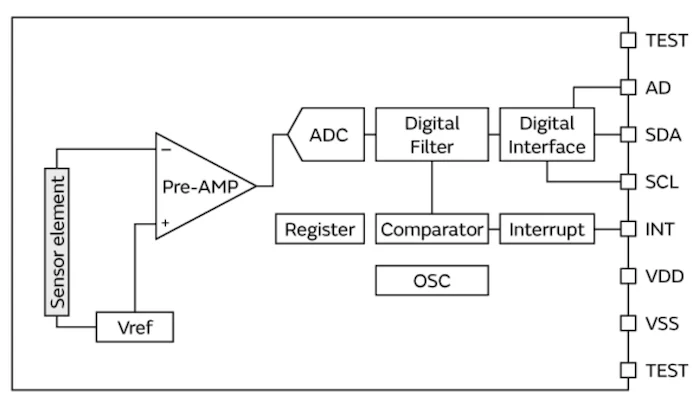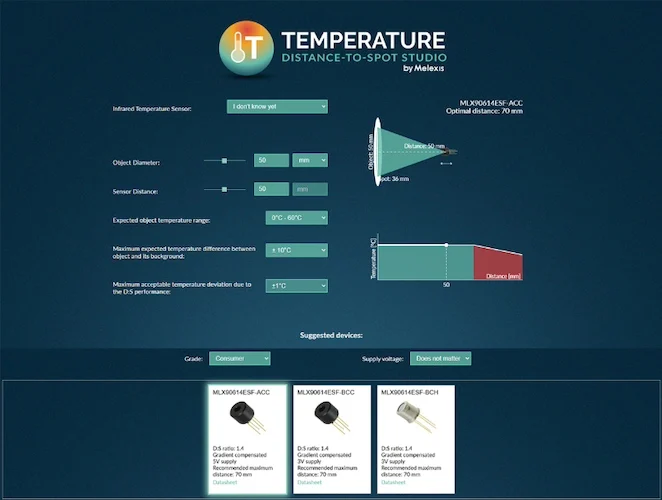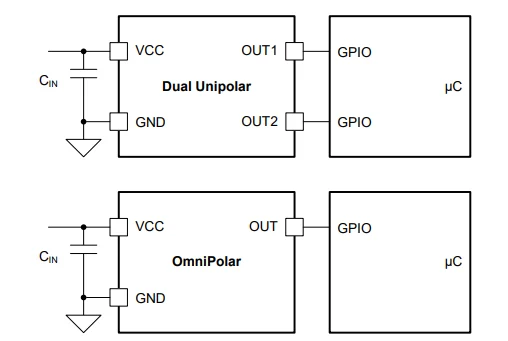New sensing solutions, from pyroelectric infrared sensors to in-plane Hall-effect switches, help engineers improve performance and efficiency in space-constrained designs.
Murata, Melexis, and Texas Instruments each recently announced new sensor offerings that point toward next-generation applications.
As devices migrate toward smaller footprints and battery-powered operation, the challenge for sensor designers is to deliver higher accuracy while consuming less power and fitting into constrained packaging. IoT platforms and wearables depend on sensors that can operate reliably in noisy environments, communicate over standardized digital interfaces, and minimize the need for external circuitry. At the same time, designers expect sensors to integrate advanced signal processing to reduce false triggers and streamline system design.

Murata's new IRS-D200ST00R1 measures 6.0 mm x 6.0 mm x 2.6 mm. Image used courtesy of Murata
Ultimately, these pressures are driving companies to introduce specialized architectures that combine efficiency, sensitivity, and ease of integration.
Murata’s Pyroelectric Infared Sensor
Murata recently released its IRS-D200ST00R1, an ultra-compact digital output pyroelectric infrared sensor designed for human detection in battery-powered IoT and smart home devices.

Block diagram of the IRS-D200ST00R1. Image used courtesy of Murata
Measuring 6.0 mm x 6.0 mm x 2.6 mm with a dual element size of 2.0 mm x 0.5 mm, the sensor incorporates a built-in preamplifier, ADC, and digital filter to provide stable I2C output without requiring external signal conditioning. The sensor operates from 1.8 V to 3.3 V with a typical current draw of 8 µA for continuous motion detection while minimizing power consumption. It also features an interrupt function that activates the host microcontroller only when motion is detected to further extend battery life.
With a sensitivity of 19.5 mV and a field of view of ±55° horizontal and ±42° vertical, the device achieves high detection accuracy. Murata claims that advanced circuit design and packaging technologies deliver strong EMI resistance and a high signal-to-noise ratio to reduce false triggers.
Melexis’ Distance-to-Spot Studio
The new Melexis Distance-to-Spot Studio is an online selection platform designed to optimize the use of the MLX90614 far-infrared (FIR) temperature sensor family. Instead of relying on a simplified field-of-view specification, the tool computes sensor suitability based on quantifiable application inputs such as object diameter, object distance, expected temperature range, and allowable deviation from the distance-to-spot ratio.

The Distance-to-Spot Studio user interface. Image used courtesy of Melexis
The MLX90614 device itself supports non-contact object temperature measurements across -70°C to 380°C, with dedicated variants engineered to meet medical-grade accuracy. By incorporating parameters such as maximum background-object temperature differential and supply voltage preferences, the software outputs tailored sensor recommendations from Melexis' portfolio. Melexis claims that this architectural approach reduces trial-and-error prototyping and accelerates sensor integration in applications ranging from industrial safety monitoring to consumer appliances.
Texas Instruments’ In-Plane, Hall-Effect Switch
Texas Instruments recently unveiled its TMAG5134, a high-sensitivity in-plane, Hall-effect switch.

TMAG5134 simplified schematic. Image used courtesy of Texas Instruments
Engineered for ultra-low power operation in a supply range of 1.65 V to 5.5 V, the device (datasheet linked) features an integrated magnetic concentrator that enhances field coupling, allowing it to operate at thresholds as low as 1 mT with a 0.4-mT hysteresis. The device supports omnipolar or dual-unipolar pole detection, with output configurations offered in push-pull CMOS or open-drain modes. Internally duty-cycled operation reduces active current to 2.4 µA during measurement and average current to 0.5–1.4 µA depending on selectable sampling rates from 1.25 Hz to 20 Hz. Typical power-on time is 60 µs with a 26-µs active measurement window.
Meanwhile, the SOT-23 package provides a single omnipolar output, while the 0.90 mm x 1.30 mm X1LGA package integrates dual outputs sensitive to opposing flux directions.
Looking Ahead in Sensor Design
The new sensors from Murata, Melexis, and Texas Instruments all demonstrate embedding more intelligence and efficiency directly at the sensing node. For engineers, these new options create opportunities to reduce design complexity and accelerate time to market, while producing more reliable products.


